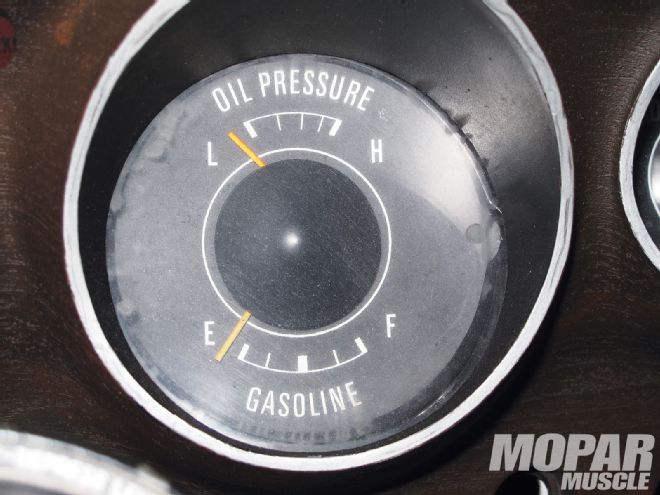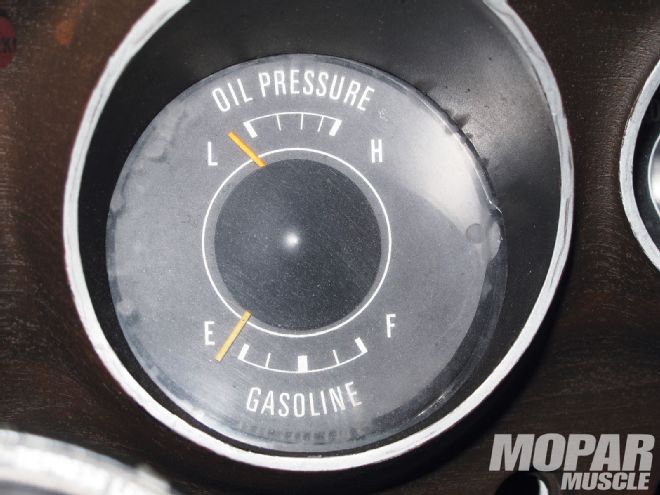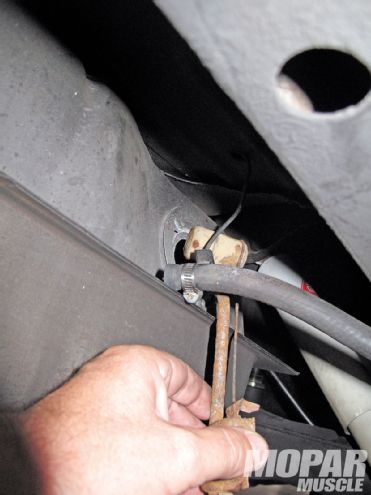
Have you ever had a car that's difficult to start after driving it for a while on a hot day? Does your Mopar run strong up to 4,000 rpm, then just seem to run out of power? If so, your car is displaying the classic symptoms of a problem commonly known as vapor lock. Technically, this problem is referred to as fuel starvation, and it can have many causes including a clogged fuel filter, fuel lines routed in hot areas, or the carburetor float bowls being adjusted too low. Typically, however, to address fuel starvation in an older Mopar, you need to start at the root of the system, the fuel tank and sending unit.
 Does your Mopar starve for fuel at the top of each gear? Does your fuel gauge always read empty? This month we'll show you how to quickly fix both problems with a new fuel tank pickup and sending unit.
Does your Mopar starve for fuel at the top of each gear? Does your fuel gauge always read empty? This month we'll show you how to quickly fix both problems with a new fuel tank pickup and sending unit.
Our '71 Road Runner had all the signs of fuel starvation as it would run strong until about the middle of third gear, then fall on its face as the carb ran dry. Additionally, the fuel gauge always read empty, indicating to us that the float had possibly filled with fuel and sank to the bottom of the tank forever. Since we had recently replaced the fuel line, filter, and engine driven fuel pump in our Plymouth, we decided it was time to check the fuel pickup and sending unit.
After running our car nearly empty on fuel so we wouldn't be showered in premium unleaded when we removed the unit, we disconnected the fuel line, vent line, ground strap, and fuel gauge wire from our factory pickup. Using a screwdriver and hammer to tap the lock ring out of the tank, we snaked our pickup out of the tank and immediately found a couple of problems.
 The pickup and sending unit are located inside the tank and depending, on the body style and year of the vehicle, are on either the front or the passenger side of the fuel tank.
The pickup and sending unit are located inside the tank and depending, on the body style and year of the vehicle, are on either the front or the passenger side of the fuel tank.
Like most older Mopars, the filtration sock on the end of our fuel pickup was nonexistent. Over time, the fuel and chemicals mixed in the fuel will make the fabric sock brittle, and it eventually breaks apart and floats to the bottom of the tank. Additionally, our main fuel supply line was corroded internally, so it was only about half the diameter of the fuel line. As we suspected, the fuel-level float was also full of fuel, which explained our gauge reading empty.
Although you can attempt to clean and repair a fuel sending unit, chances are yours will have the same problems we found with ours, rendering it too far gone for repairs. Fortunately, we checked the Year One catalog and found they carry new pickup and sending units for nearly all Mopars, so we ordered one for our application. Once we had our new part, we drained and flushed the fuel tank before installing it. After installation, we immediately noticed that the fuel pump kept the filter full, while before it would only fill it slightly. Better yet, our fuel gauge now reads properly, and the 383 in our Road Runner pulls strongly through all the gears without a hint of fuel starvation. Not bad for a repair that takes less than an hour to complete!